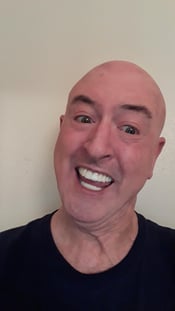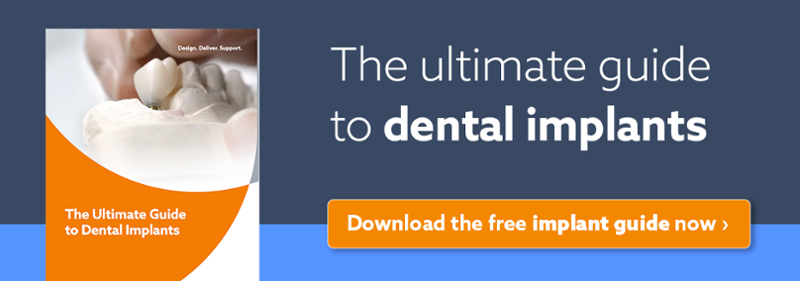Case: Transformative screw-retained bridge
Dr. Georges Raffoul, Coast Dental, Largo, FL DDS Laboratory, Darren Stiff, MDT
The Challenge:
The patient has had extensive restorative work done throughout the years. He presented edentulous in numbers 2-5 and 7-9 and implants in numbers 4, 5, 7 and 8. Though the implants were a good spread, they were not in the ideal angles.
Dr. Raffoul had not placed the implants, however, he was well positioned to ensure they are properly restored. He earned his Doctor of Dental Medicine degree from University of Pennsylvania School of Dental Medicine, where he developed a deep interest in restorative care and has been practicing for several years. Dr. Raffoul also has a great partnership with DDS Laboratory, which created the restoration.
One of the implants, #7 was placed partially into the root of the adjacent tooth, Dr. Raffoul had to remove the implant, extract tooth #6 and do a bone graft. Another major consideration was the occlusion, large arch form, in conjunction with an implant supported bridge.

“Communication with lab is key to a case like this. Darren andI communicated frequently throughout
the case, and we both wanted the best care for
the patient.” - Dr. Raffoul
Figure 1. Radiographic image of patient's extensive restorative work
The Solution:
The short answer is that the lab produced a screw-retained zirconia bridge over two non-engaging titanium bases and a multi unit cap. Why did they do that? When possible, Dr. Raffoul and DDS, provide a screw-retained restoration. It is retrievable and we can avoid intraoral cementation, which has been shown to lead to implant failure.
To make this work, they had to correct the angulation of the implant for tooth #7. The doctor placed a 17 degree multi unit abutment. That moved the access hole to the lingual side and solved the problem.

DDS used Open Implants, as they do with many of their cases.
“Open Implants gives us a simpler digital workflow, we can do all of the work in-house andget it to the patient faster. We love their non-engaging bases and their library. Their system allows us meet the esthetic needs for the case and provides us with the right abutment height for proper support and cement retention.”
- Darren Stiff, MDT, DDS Laboratory
Find out how they did it . . .
How we fabricated the restoration
By Darren Stiff, MDT, DDS Laboratory
We followed our protocol to make sure we produced a final restoration that required no adjustments. We successfully delivered the restoration to Dr. Raffoul and the patient. We were happy to see the patient exuding confidence almost immediately after it was placed.
Watch the video below to learn more.
BEFORE
.jpg?width=175&name=Patient%20BEFORE(1).jpg)
AFTER
.jpg?width=175&name=Patient%20AFTER(1).jpg)

Please be reminded that should you wish to discuss a case in more detail, our experienced technical team is here to assist you.
Click here to schedule a consultation with our technical team »
